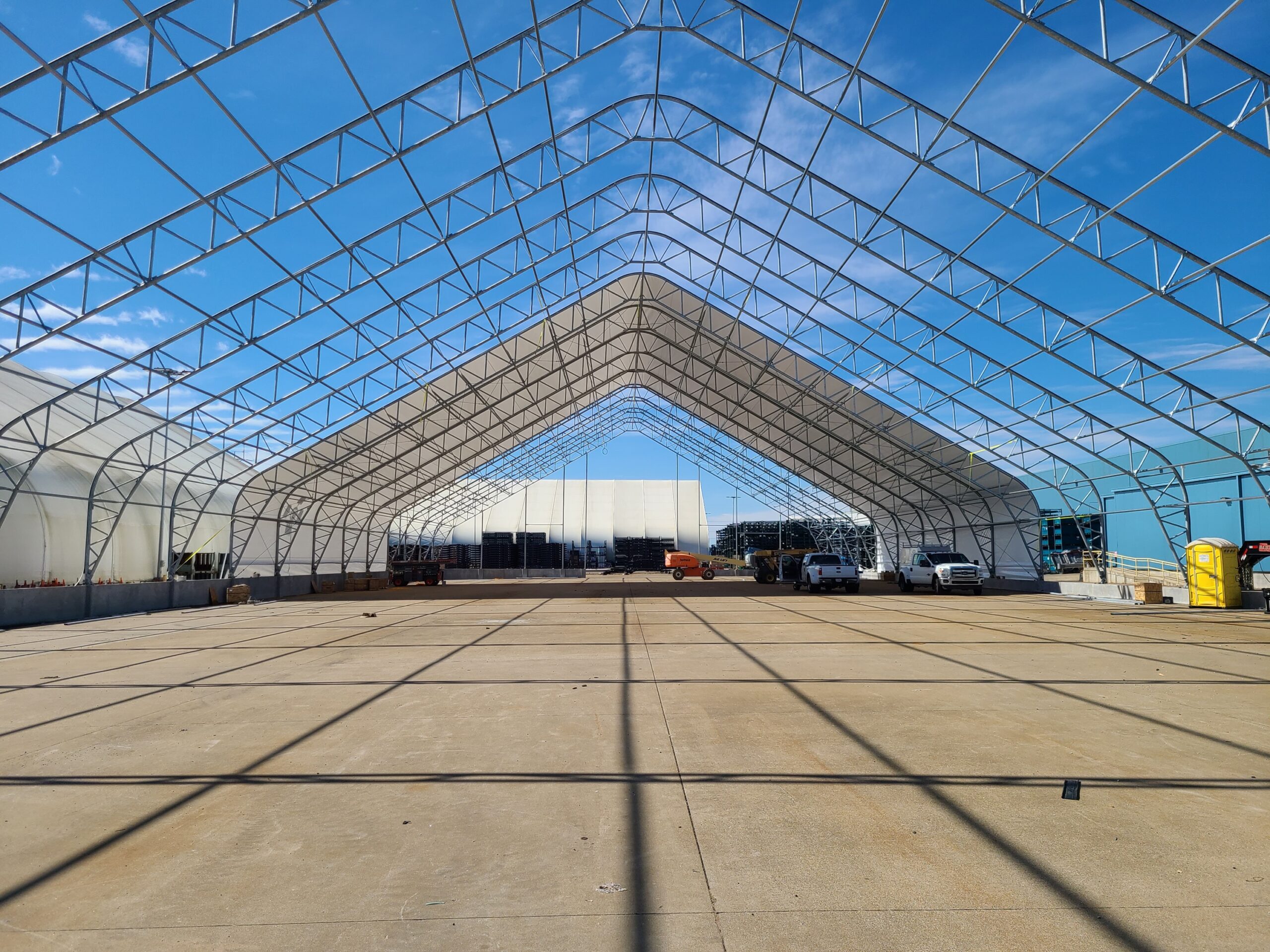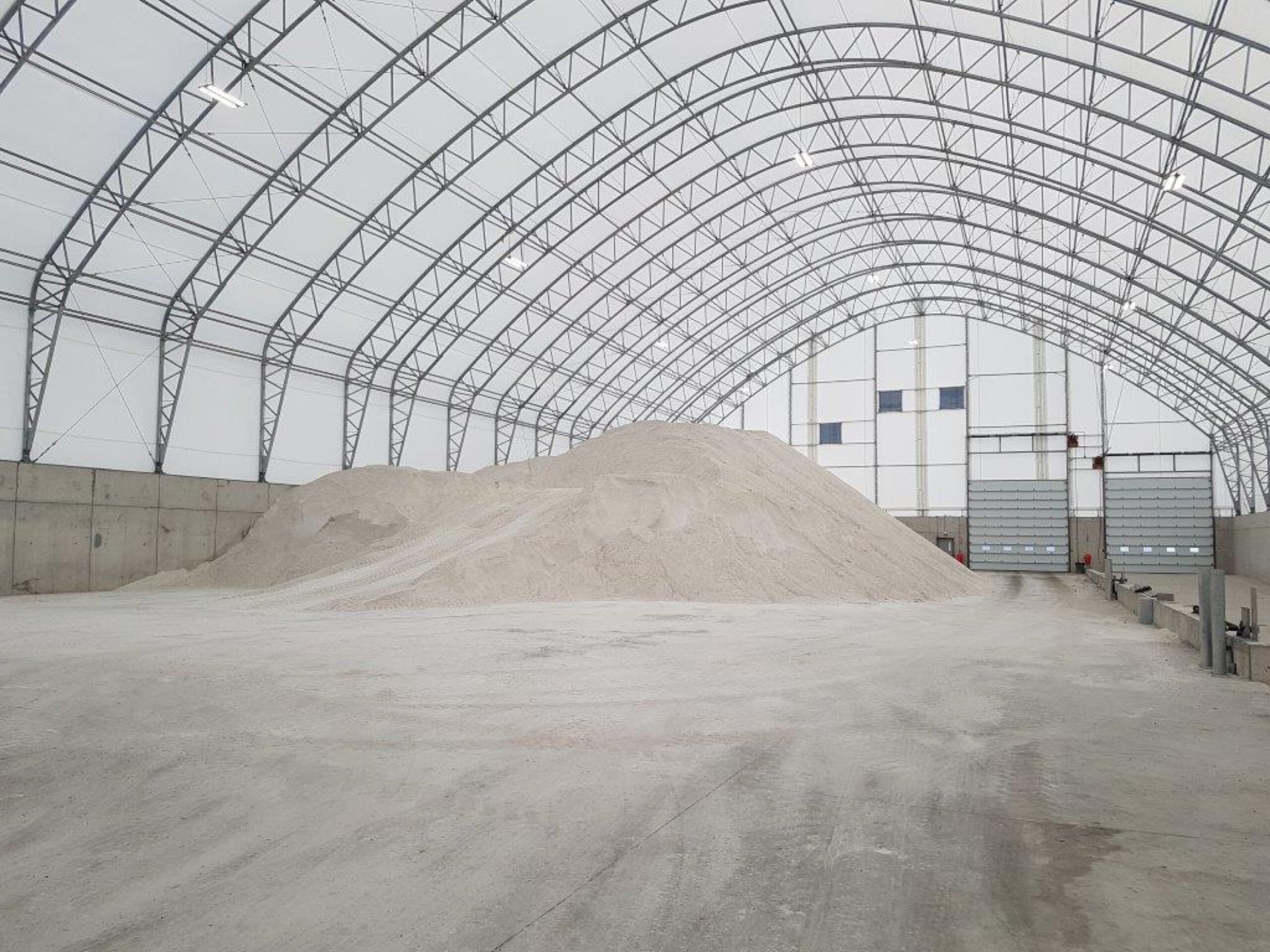The Tactical Advantages of Fabric Structures for Military Use

Military structures need to be highly durable, easy to set up and take down, lightweight enough to move quickly, and reliable enough to handle even the toughest of weather. The days of older-style tenting are gone. Today, military shelters and functional spaces are enhanced with the use of highly customizable fabric structures. Recognizing the advantages of fabric structures for the military is critical. In many situations, these structures reduce impact not just on the cost and efficiencies of the military requirements but also on the environmental benefits of fabric.
What Are the Advantages of Military Fabric Buildings?
Military fabric building advantages have been demonstrated many times. The military has found significant success in using these structures, including in harsh weather areas, on unstable foundations, and on constantly moving bases. Consider why military fabric material use makes sense for so many applications. These are just some of the benefits of fabric buildings.
Fast deployment
One of the core advantages of military fabric buildings is their ability to be set up quickly. Though variations can occur, it is possible to install well over 1,800 square feet of fabric buildings within a single day without the requirements of using a third-party contractor. This enables quick deployment in areas of need quickly, allowing military organizations to get where they need to go and set up operations within a matter of days.
Installation that is flexible for any environment
Another core benefit of using fabric is its versatility. These can be used as a military shelter for people or used to house materials. Placed near water or in very humid climates. They can be used on any type of foundation, whether they are pile-driven into a foundation or placed on asphalt or dirt. Because of this versatility, the same structure can be used from one location to the next without complication or delay.
Incredible weather protection anywhere
One of the benefits of a military shelter designed of fabric is its durability and weather protection. Though it may seem to be a less durable option than a traditional building, types of fabric buildings can provide incredible, industrial-grade protection from all elements including snow, rain, dust storms, and wind. This is due to their overall galvanized steel frames that can withstand strong weather even heavy gusts of wind and heavy snow loads. Even as very portable structures, this high level of weather protection makes them globally effective solutions.
Thermal performance benefits
When military units are out in difficult conditions, any level of sun protection is critical. The advantages of military fabric buildings will include their ability to repel both UV-A and UV-B radiation. This protects people and equipment from the risk of overexposure to the sun. While they block out the sun’s rays, they also create a cooled interior environment. Most of the time, even in the blazing heat, the air within the structure is 10 to 15 degrees cooler than the heat outdoors. In the winter months, the higher level of air control also makes them warm and comfortable.
This is a natural benefit – there is no need for an artificial climate control system to be configured for many environments as a direct result. This also makes them highly flexible for challenging environments.
The Environmental Benefits of Fabric for Military Shelter Systems
The advantages of fabric structures for military use are easy to see, but what are the environmental implications of using them?
- They are fast to set up. This directly translates into virtually no need to use heavy equipment and energy resources for the construction of the space. This is an immediate benefit because it eliminates those pollution-producing outcomes.
- They are reusable. With effective setup, these military shelters can be taken down, moved to a new location, and set up again at the same level of quality and functionality. This also reduces overall costs over time while keeping more materials out of the landfill.
- They offer better environmental control without the use of artificial systems. Warmer in the winter and cooler in the summer than outside temperatures, there is often no need to invest in energy sources to heat and cool these spaces.
- They do not require expensive and carbon-heavy foundations either. There is no need to source raw materials to create a concrete pad if not desired.
Military shelter systems made of fabric are also better for the environment from a manufacturing standpoint. They require fewer resources to manufacture and often employ the use of recycled and reused materials to further make them a desirable solution.
The environmental benefits of fabric are an outstanding reason for considering the investment in military fabric buildings. Yet, there are numerous additional reasons to make the switch. The advantages of fabric building setup, management, limited maintenance, and easy tear down make them highly flexible for fast-moving, highly strategic military applications.
With these environmental benefits of fabric buildings so easily applicable to today’s military needs, adopt a fabric-building strategy for your organization. At Britespan Building Systems Inc., we offer comprehensive support and guidance to help organizations obtain the best possible fabric-building solutions for their organization’s needs. No matter the challenge, there are clear advantages to utilizing our systems for your next military shelter need.

